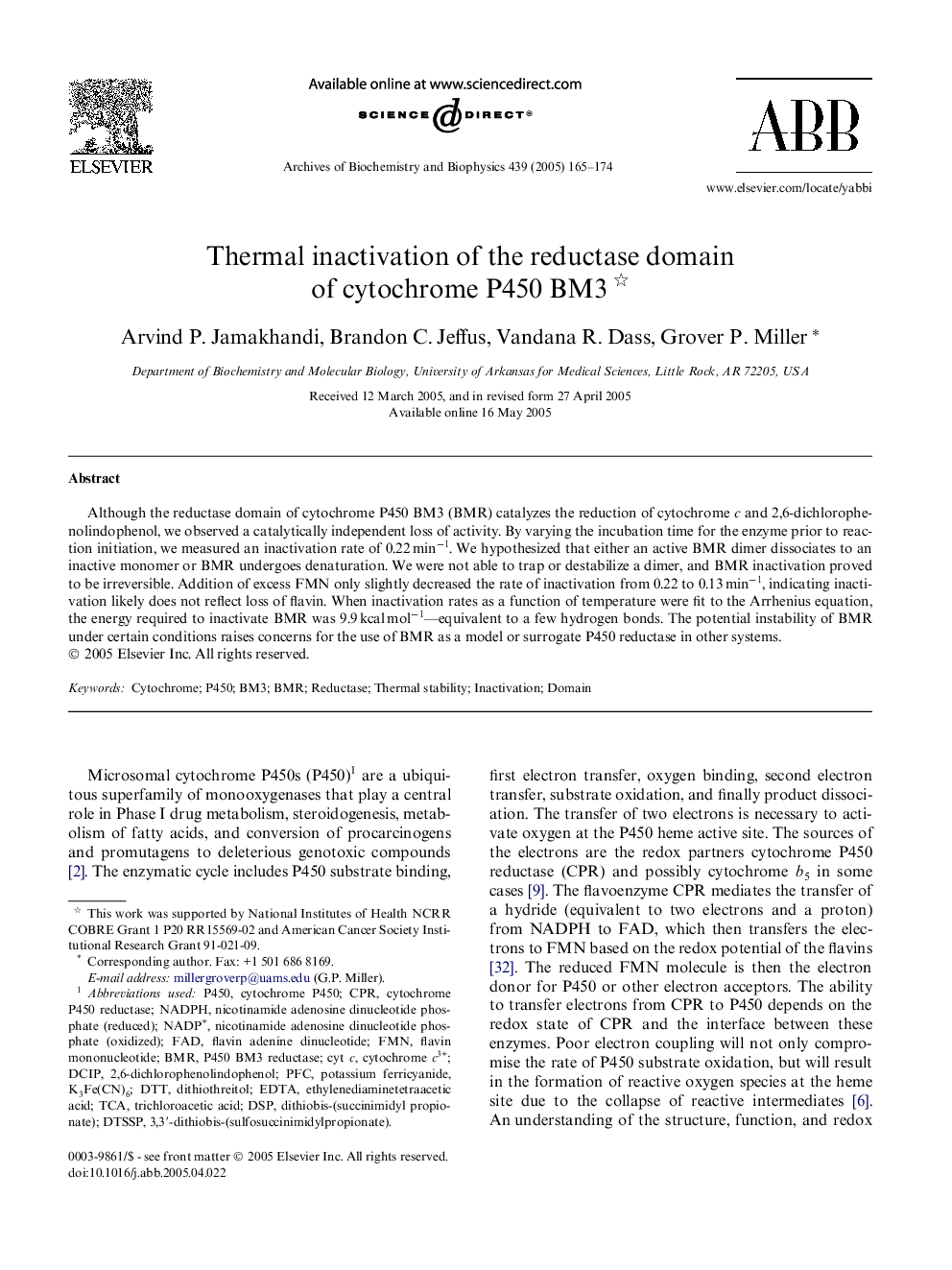| Article ID | Journal | Published Year | Pages | File Type |
|---|---|---|---|---|
| 9882164 | Archives of Biochemistry and Biophysics | 2005 | 10 Pages |
Abstract
Although the reductase domain of cytochrome P450 BM3 (BMR) catalyzes the reduction of cytochrome c and 2,6-dichlorophenolindophenol, we observed a catalytically independent loss of activity. By varying the incubation time for the enzyme prior to reaction initiation, we measured an inactivation rate of 0.22 minâ1. We hypothesized that either an active BMR dimer dissociates to an inactive monomer or BMR undergoes denaturation. We were not able to trap or destabilize a dimer, and BMR inactivation proved to be irreversible. Addition of excess FMN only slightly decreased the rate of inactivation from 0.22 to 0.13 minâ1, indicating inactivation likely does not reflect loss of flavin. When inactivation rates as a function of temperature were fit to the Arrhenius equation, the energy required to inactivate BMR was 9.9 kcal molâ1-equivalent to a few hydrogen bonds. The potential instability of BMR under certain conditions raises concerns for the use of BMR as a model or surrogate P450 reductase in other systems.
Related Topics
Life Sciences
Biochemistry, Genetics and Molecular Biology
Biochemistry
Authors
Arvind P. Jamakhandi, Brandon C. Jeffus, Vandana R. Dass, Grover P. Miller,
